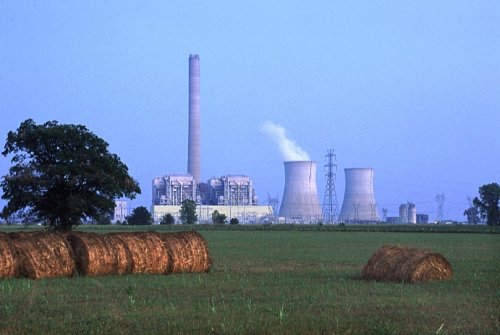EPA Administrator Scott Pruitt has his work cut out for him. After eight years of regulatory abuse during the Obama administration, and after decades of misuse of power by the agency’s largely unaccountable bureaucrats, Pruitt’s pledge to return EPA to its original mission will be a monumental undertaking.
He’s off to a good start. Pruitt has been at the forefront of Trump administration efforts to overturn a host of ill-conceived, and possibly unconstitutional, Obama-era regulations, including the anti-fossil-fuel Clean Power Plan. Pruitt has also urged U.S. withdrawal from the Paris Climate Agreement, which will restrict Americans’ access to abundant and affordable energy.
Pruitt can further show that a new day has dawned at the agency by undoing the harm the Obama EPA was getting ready to inflict on families and businesses in Arkansas. By claiming that Arkansas is out of compliance with the national regional haze rule, the Obama EPA, through what is known as the Federal Implementation Plan (FIP), was prepared to force the shutdown the state’s two largest coal-fired power plants, White Bluff and Independence.
The FIP calls for scrubbers to be installed on all four units at White Bluff and Independence at an estimated cost of $2 billion. These scrubbers are to be operational within five years. What’s more, low-NOx (nitrogen oxides) burners and overfire air systems (providing secondary air to complete combustion of unburned fuel) will be required at both plants within 18 months.
Mulling their options, the utilities that own the two plants, led by Entergy Corp., have stated that adding the controls would be cost prohibitive and are considering closing the plants and replacing them with natural gas facilities. This, of course will also come with a substantial price tag, and those costs will be passed on the state’s ratepayers.
Resistance from the Governor and Attorney General
Aware that other states are facing their own regional-haze-related problems with EPA, Governor Asa Hutchinson chose to fight. “I am mindful of litigation in surrounding states regarding regional haze and I have directed the ADEQ [Arkansas Department of Environmental Quality] to work with the Arkansas Attorney General to pursue all available legal remedies,” he stated last September. Gov. Hutchinson was alluding to the July 15, 2016 ruling by the U.S. 5th Circuit Court of Appeals that placed a “stay” on the FIP EPA was trying to impose on Texas. Indeed, Arkansas Attorney General Leslie Rutledge has sued EPA, and the case is pending in the U.S. 8th Circuit Court.
Like Texas, Arkansas has a strong case to make. The Obama EPA twisted the language of the Clean Air Act’s (CAA) regional haze provisions so it could ensnare the two power plants. White Bluff was constructed in 1980 and is subject to the CAA’s “Best Available Retrofit Technology” (BART) provision, meaning that it can be required to install emissions controls. Independence was built in 1983 and is not covered under the time period laid out for BART. Ignoring the clear language of the Clean Air Act, EPA designated Independence a Bart-eligible facility along with White Bluff.
More EPA Shenanigans
EPA also tried to use the “reasonable progress” provision of the regional haze rule to justify ordering the retrofitting of more emissions-control equipment at the two plants. The reasonable progress provision applies to states that have facilities that impair visibility at national parks and federal wilderness areas. These states are required to show “reasonable progress” in improving visibility in these federal areas.
Arkansas is doing just that. The state is not only meeting its reasonable progress goal for 2018, it’s exceeding it. Visibility has improved dramatically in the state since 2004 and is approaching natural background conditions much more rapidly than is requited under the regional haze rule. According to the Federal Land Management Environmental Database, visibility improvements have been particularly significant in the Upper Buffalo Wilderness Area in northwest Arkansas and the Caney Creek Wilderness Area in the west central part of the state. Furthermore, emissions of sodium dioxide, nitrogen oxides, and carbon dioxide from the state’s power sector have all undergone dramatic decreases in recent years. Technological advances ready to be installed promise to further cut emissions at the two plants and at other coal-fired facilities around the country.
If EPA’s regional-haze mandates are allowed to stand, Arkansas will pay a huge price and get nothing in return. The loss of White Bluff and Independence would disrupt the state’s economy precisely at a time when things are looking up. The state’s unemployment rate is 3.6%, well below the national average of 4.5%.
Diversified Power Mix
Arkansas has one of the nation’s healthiest mixes of power sources. As of 2015 (latest figures available), Arkansans derived 39% of their electricity from coal, 27% from natural gas, 25%, from nuclear, 6% from hydro, and 3% from renewables This diversity means that the state’s ratepayers are not overly dependent on any particular source for their electricity, sparing them the economic disruptions that can come with market fluctuations. According to the Energy Information Administration, utility rates in Arkansas are almost 22% below the national average. This makes Arkansas an attractive destination for both businesses and families.
Allowing the Obama administration’s war on coal to continue would harm one of the state’s most promising industries. According to the American Iron and Steel Institute, over 5,000 people are employed in the state’s steel industry, and another 34,600 jobs in Arkansas are supported by its steel industry. Metallurgic coal is an essential element in high-quality steel, the kind of thing the Pentagon needs to carry out its mission. As such, Arkansans have a stake in both coal and steel.
Administrator Pruitt can do his own part to “make America great again” by scrapping EPA’s patently dishonest scheme to punish Arkansas.

“Sodium dioxide” I don’t think exists. You can have Na2O – that is, 2 sodium ions and one of oxygen. That sodium oxide is considered toxic.